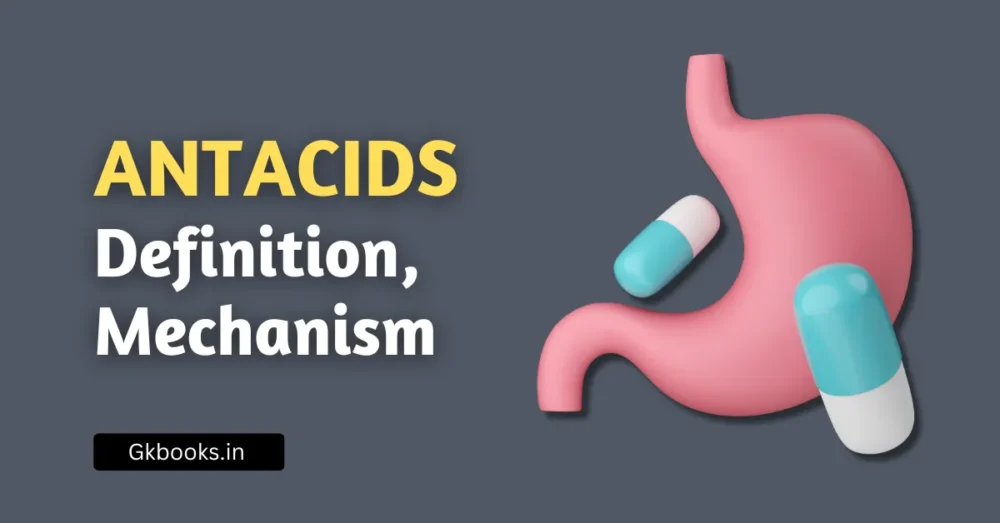Analgesics are one of the most commonly used medicines in everyday life, making them an essential topic in General Science for UPSC, SSC CGL, CHSL, RRB NTPC, State PSCs, and other competitive exams. Whether it’s a headache or a post-surgery pain, analgesics provide pain relief. This blog will help you understand the topic in a student-friendly, exam-focused way with keywords, real-life examples, and MCQs to test your learning.
What are Analgesics?
✅ Definition:
Analgesics are pain-relieving drugs that reduce or eliminate pain without affecting consciousness or curing the underlying cause. They are commonly called painkillers and are widely used in medical practice.
🔹 Root Word:
From Greek “an-“ meaning without and “algesia” meaning pain.
✅ Key Characteristics
◾ Do not treat the cause of pain, only provide symptomatic relief
◾ Act on the central nervous system (CNS) or at the site of pain
◾ Used to treat headaches, muscle pain, joint pain, toothache, menstrual cramps, etc.
Types of Analgesics
Analgesics are mainly categorized into two broad types:
🔵 1. Non-Narcotic (Non-Opioid) Analgesics
Used for mild to moderate pain and does not cause addiction.
Examples:
◾ Paracetamol (Acetaminophen)
◾ Aspirin (Acetylsalicylic Acid)
◾ Ibuprofen
🔺Mechanism:
They inhibit the enzyme cyclooxygenase (COX), which blocks the synthesis of prostaglandins (chemicals that cause pain and inflammation).
🔹 Uses:
- Headache
- Fever
- Muscle pain
- Inflammatory pain (arthritis)
🔹 Side Effects (Long-term Use):
- Stomach ulcers
- Kidney damage
🔴 2. Narcotic (Opioid) Analgesics
Used for severe pain and may cause addiction.
Examples:
◾ Morphine
◾ Codeine
◾ Heroin (Not used medically due to high addiction potential)
🔺Mechanism:
They act on the central nervous system (CNS) by binding to opioid receptors and altering the perception of pain.
🔹 Uses:
- Post-surgical pain
- Cancer pain
- Severe injury
🔹 Side Effects:
- Drowsiness
- Nausea
- Respiratory depression
- Addiction
Comparison of Non-Narcotic vs Narcotic Analgesics
| Feature | Non-Narcotic Analgesics | Narcotic Analgesics |
|---|---|---|
| Pain Intensity | Mild to moderate | Severe |
| Addiction Risk | Low | High |
| Example | Paracetamol, Aspirin | Morphine, Codeine |
| Action Site | Site of injury | Central Nervous System (CNS) |
| Uses | Fever, muscle pain | Post-surgery, cancer pain |
| Common Side Effects | Ulcer, kidney damage | Addiction, drowsiness |
Real-World Application
◾ You take paracetamol when you have a fever – it reduces pain and fever but not the cause of infection.
◾ Cancer patients are often given morphine to manage chronic pain.
Summary Notes for Quick Revision
✅ Analgesics: Pain-relieving drugs
✅ Two Types: Non-narcotic (e.g., Paracetamol), Narcotic (e.g., Morphine)
✅ Non-Narcotic: For mild pain, fewer side effects, no addiction
✅ Narcotic: For severe pain, acts on CNS, risk of addiction
✅ Prostaglandins: Chemical messengers involved in pain
✅ COX Inhibitors: Stop pain signals by blocking prostaglandin production
Practice Questions (MCQs):
Q1: Which of the following is a non-narcotic analgesic?
A. Morphine
B. Codeine
C. Paracetamol
D. Heroin
✔️ Answer: C
Q2: Which enzyme is inhibited by non-narcotic analgesics?
A. Trypsin
B. Amylase
C. Cyclooxygenase
D. Lipase
✔️ Answer: C
Q3: Which of these is a side effect of long-term aspirin use?
A. Improved digestion
B. Liver enlargement
C. Stomach ulcers
D. Skin pigmentation
✔️ Answer: C
Q4: Which of the following analgesics is derived from opium?
A. Ibuprofen
B. Paracetamol
C. Codeine
D. Aspirin
✔️ Answer: C
Q5: The term ‘analgesic’ refers to a drug that:
A. Induces sleep
B. Reduces fever
C. Relieves pain
D. Cures infection
✔️ Answer: C
Q6: Which analgesic is commonly used in fever and has antipyretic properties?
A. Morphine
B. Paracetamol
C. Codeine
D. Diazepam
✔️ Answer: B
Q7: Which of the following analgesics can cause addiction?
A. Aspirin
B. Morphine
C. Ibuprofen
D. Paracetamol
✔️ Answer: B
Q8: Heroin is not used as a medical analgesic because:
A. It is too cheap
B. It is ineffective
C. It causes euphoria and addiction
D. It affects only external pain
✔️ Answer: C
Q9: Which of the following does not belong to the group of non-narcotic analgesics?
A. Aspirin
B. Ibuprofen
C. Morphine
D. Paracetamol
✔️ Answer: C
Q10: Which statement is true about narcotic analgesics?
A. They never cause addiction
B. They act only at the site of pain
C. They act on the CNS
D. They are only used in children
✔️ Answer: C
Conclusion
Understanding Analgesics is crucial not only for exams but also for everyday awareness of health and medicine. This topic links Chemistry, Biology, and General Awareness, making it a must-revise concept for all serious aspirants. Remember the types, uses, and side effects well — they are often framed in conceptual, factual, or assertion-reason questions in exams.
Explore More:
Antacids: Definition, Mechanism, and Modern Treatment for Acidity – Complete Notes for Exams
Valence Electrons: Definition, Examples, and Importance for Exams







